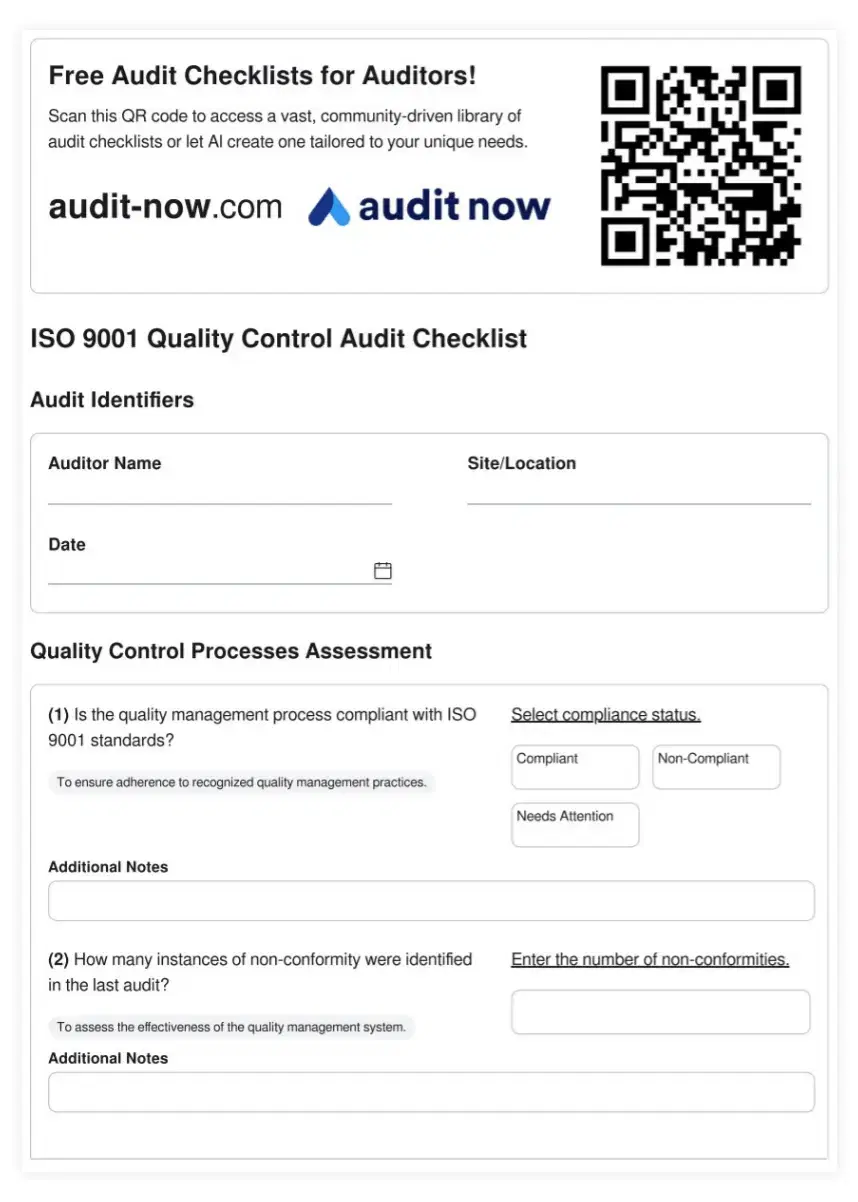Preparing for an IT compliance audit can feel daunting, but the right questions make all the difference. This guide walks you through 12 critical areas to check so your organization stays secure, compliant, and audit-ready.
29 Aug 2025
•
Beril Işık

Featured Checklist

Data Center Sustainability and Green IT Audit Checklist
The Data Center Sustainability and Green IT Audit Checklist is a crucial tool for organizations striving to minimize their environmental impact while maintaining efficient IT operations. This comprehensive checklist addresses key aspects of sustainable data center practices, including energy efficiency, renewable energy utilization, water conservation, e-waste management, and carbon footprint reduction. By conducting regular sustainability audits, organizations can optimize resource consumption, reduce operational costs, comply with environmental regulations, and demonstrate corporate social responsibility. This checklist is essential for sustainability officers, data center managers, and IT leaders committed to implementing eco-friendly practices in their data center operations.
As an IT analyst, preparing for an IT compliance audit can feel overwhelming. When you consider complex regulations, a meticuluous preparation is essential.
The difference between a smooth audit and difficult one is certain during a preparation.
This guide outlines the 12 essential questions for your audit readiness plan. By addressing them, you can achieve compliance confidently and efficiently across any framework.
The first step is to clearly understand which rules apply to your organization. Applying resources to irrelevant standards wastes time and budget.
Knowing your audit scope helps you set the right controls. It also ensures you collect proper evidence. So that you can keep your team aligned with compliance goals.
You cannot protect what you don’t know exists. Data mapping is the foundation of any IT compliance program. It informs security controls, access policies, and incident response plans.
By identifying where sensitive data resides and how it moves, you eliminate blind spots. This visibility allows you to prioritize risks and strengthen compliance before threats escalate thanks to risk management systems
Policies are proof of your organization’s commitment to security. But auditors need something more than documents. They want evidence that policies are actively implemented.
Demonstrating real-world enforcement through logs, access reviews, and audit trails turns written promises into measurable compliance. This not only satisfies auditors but also builds trust with customers and stakeholders.
Following the principle of least privilege is critical. This gives users only the access they need. Poor access management is a common vulnerability.
Personalize your workflows with customized checklists
Try Now
A security incident is often a “when,” not an “if.” Auditors will examine your incident response (IR) plan carefully. So that they can ensure you can detect, contain, and recover quickly.
Your security is only as strong as your vendors. A vulnerability in a partner system can become your vulnerability.
Logs are essential for detecting anomalies and proving control effectiveness. Auditors want evidence that you’re analyzing, not just collecting, logs.
Uncontrolled system changes are a major source of vulnerabilities. IT managers need to see a formal change management process.
Protecting sensitive data everywhere it exists is a universal compliance requirement. Auditors will verify encryption and protective measures.
Auditors want proof you can maintain IT compliance and recover critical systems during disruptions.
Access management during employee lifecycle events is critical. Delays in offboarding create risk.
Compliance is an ongoing cycle. Auditors look for evidence of regular review, remediation, and adaptation to new threats.
Answering these questions requires structure and thorough documentation. Audit Now makes this easier. Our AI builds a personalized IT compliance checklist according to your industry, standards, and IT environment. This helps you cover all bases and prepares you with a clear plan for audit readiness.
Audit Best Practices: Learn More
What Does a Restaurant Manager Do? Key Responsibilities and Best Practices
The Complete Guide to Restaurant Inventory Management in 2025